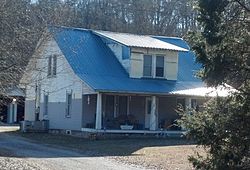
Oak Ridge is a city in Anderson and Roane counties in the eastern part of the U.S. state of Tennessee, about 25 miles (40 km) west of downtown Knoxville. Oak Ridge's population was 31,402 at the 2020 census. It is part of the Knoxville Metropolitan Area. Oak Ridge's nicknames include the Atomic City, the Secret City, and the City Behind a Fence.

K-25 was the codename given by the Manhattan Project to the program to produce enriched uranium for atomic bombs using the gaseous diffusion method. Originally the codename for the product, over time it came to refer to the project, the production facility located at the Clinton Engineer Works in Oak Ridge, Tennessee, the main gaseous diffusion building, and ultimately the site. When it was built in 1944, the four-story K-25 gaseous diffusion plant was the world's largest building, comprising over 5,264,000 square feet (489,000 m2) of floor space and a volume of 97,500,000 cubic feet (2,760,000 m3).
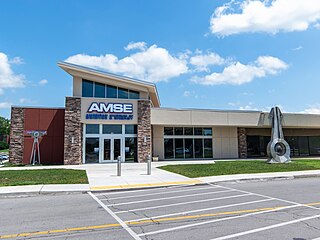
The American Museum of Science and Energy (AMSE) is a science museum in Oak Ridge, Tennessee, designed to teach children and adults about energy, especially nuclear power, and to document the role Oak Ridge played in the Manhattan Project. The museum opened as the American Museum of Atomic Energy in 1949 in an old World War II cafeteria on Jefferson Circle. It moved to its second facility in 1975 and was renamed AMSE in 1978. As of June 2019, the museum is located in the shopping mall across the street from the old location.
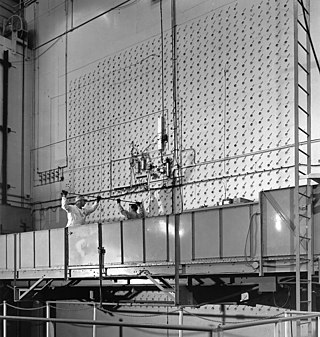
The X-10 Graphite Reactor is a decommissioned nuclear reactor at Oak Ridge National Laboratory in Oak Ridge, Tennessee. Formerly known as the Clinton Pile and X-10 Pile, it was the world's second artificial nuclear reactor and the first intended for continuous operation. It was built during World War II as part of the Manhattan Project.

Miller's Department Store was a chain of department stores based in East Tennessee.

The United Church, Chapel on the Hill in Oak Ridge, Tennessee was the city's main church during World War II. Dedicated on September 30, 1943, and completed late in October 1943, it was originally a multi-denominational chapel shared by Catholic, Protestant and Jewish congregations.

The Children's Museum of Oak Ridge is a non-profit children's museum in Oak Ridge, Tennessee, United States, that provides museum exhibits and educational programs.
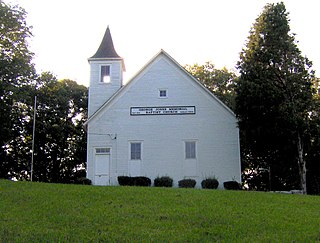
Wheat was a farming community in Roane County, Tennessee. The area is now in the city of Oak Ridge.

The Luther Brannon House was a stone bungalow structure at 151 Oak Ridge Turnpike in Oak Ridge, Tennessee, United States, where it was one of the few buildings remaining from before World War II.

Tennessee marble is a type of crystalline limestone found only in East Tennessee, in the southeastern United States. Long esteemed by architects and builders for its pinkish-gray color and the ease with which it is polished, the stone has been used in the construction of numerous notable buildings and monuments throughout the United States and Canada, including the National Gallery of Art, National Air and Space Museum, and United States Capitol in Washington, D.C., the Minnesota State Capitol, Grand Central Terminal in New York, and Union Station in Toronto. Tennessee marble achieved such popularity in the late-19th century that Knoxville, the stone's primary finishing and distribution center, became known as "The Marble City."

The three Oak Ridge gatehouses, also known as "checking stations", "guard houses", or "guard shacks", are security checkpoints in Oak Ridge, Tennessee, built c. 1948-1949 to control access to the Atomic Energy Commission (AEC) production and research facilities in Oak Ridge. These are individually listed on the U.S. National Register of Historic Places as Bear Creek Road Checking Station, Bethel Valley Road Checking Station and Oak Ridge Turnpike Checking Station.
This is a list of the National Register of Historic Places listings in Anderson County, Tennessee.

The George Jones Memorial Baptist Church, also known as the "Wheat Church," is a historic church building at the former site of the community of Wheat in Oak Ridge, Tennessee, United States. It is the only structure remaining from Wheat, a rural Roane County community that was dissolved in 1942 when the United States government assumed ownership of the land for the Manhattan Project.

The Alexander Inn, originally known as The Guest House and now the Alexander Guest House, is a historic building in Oak Ridge, Tennessee that was built during the Manhattan Project to house official visitors and that later was used as a hotel. It is included on the National Register of Historic Places as a contributing property in a historic district.

The Dr. Fred Stone Sr. Hospital is a six-story brick structure in Oliver Springs, Tennessee. Noted for its castle-like appearance and eccentric, unplanned design, the building was home to a one-doctor hospital operated by retired U.S. Army physician Fred Stone Sr. (1887–1976) in the 1940s, 1950s, and 1960s. Stone delivered over 5,000 babies while working at the hospital, and expanded the building room-by-room, floor-by-floor in his spare time. In 2006, the building was added to the National Register of Historic Places for its association with the region's medical services history, namely the transition from rural country doctors to modern hospitals.

Oak Ridge Historic District is a historic district in Oak Ridge, Tennessee, that is listed on the National Register of Historic Places.
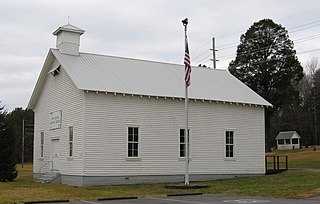
New Bethel Baptist Church is a historic church on Bethel Valley Road in Oak Ridge, Tennessee.

The Clinton Engineer Works (CEW) was the production installation of the Manhattan Project that during World War II produced the enriched uranium used in the 1945 bombing of Hiroshima, as well as the first examples of reactor-produced plutonium. It consisted of production facilities arranged at three major sites, various utilities including a power plant, and the town of Oak Ridge. It was in East Tennessee, about 18 miles (29 km) west of Knoxville, and was named after the town of Clinton, eight miles (13 km) to the north. The production facilities were mainly in Roane County, and the northern part of the site was in Anderson County. The Manhattan District Engineer, Kenneth Nichols, moved the Manhattan District headquarters from Manhattan to Oak Ridge in August 1943. During the war, CEW's advanced research was managed for the government by the University of Chicago.

Elza was a community in Anderson County, Tennessee, that existed before 1942, when the area was acquired for the Manhattan Project. Its site is now part of the city of Oak Ridge, Tennessee.

Manhattan Project National Historical Park is a United States National Historical Park commemorating the Manhattan Project that is run jointly by the National Park Service and Department of Energy. The park consists of three units: one in Oak Ridge, Tennessee, one in Los Alamos, New Mexico and one in Hanford, Washington. It was established on November 10, 2015 when Secretary of the Interior Sally Jewell and Secretary of Energy Ernest Moniz signed the memorandum of agreement that defined the roles that the two agencies had when managing the park.
